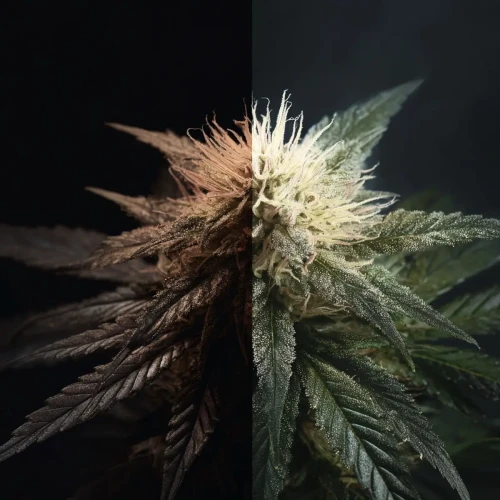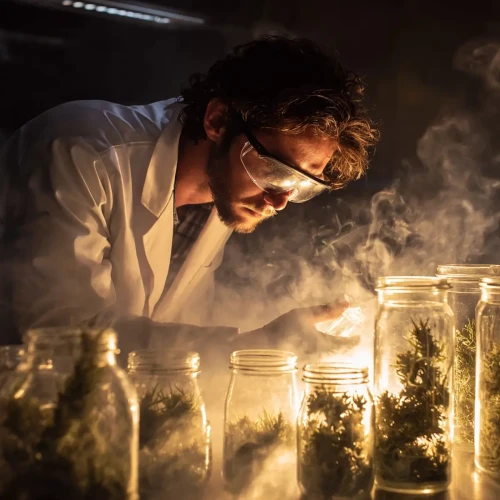Autoflower cannabis strains have changed the way both commercial growers and hobbyist growers take care of their plants. In the past, autoflowers were not as popular because they produced fewer flowers and were less potent. But now they are just as good as photoperiod flowers in terms of quality and popularity. To really understand how far these strains have come and how they will affect cannabis growing in the future, we need to look at their unique history, the science behind Autoflower seeds, and how growers all over the world have benefited from them.
A Short History of Autoflowering Cannabis
The hardy Cannabis ruderalis subspecies that grows in harsh climates in Central Asia and Eastern Europe is the ancestor of autoflowering cannabis plants. Ruderalis changed to live in places with short summers and weather that changes a lot. It developed an amazing ability: it can flower based on age instead of light cycle.
The autoflower revolution really got going when Joint Doctor bred the first autoflowering strain, called "Lowryder Autoflower," in the early 2000s. Joint Doctor crossed ruderalis genetics with traditional photoperiod strains to make a new type of plant that has autoflower traits and higher potency and yield potential.
Lowryder was a small success at first, but purists quickly dismissed it because it was small and didn't have a lot of cannabinoids. But visionary breeders quickly saw its potential and began to improve autoflower genetics, slowly making strains with strong potency, a wide range of flavours, and high yields.
The Science Behind Autoflower Genetics
Plants that autoflower are genetically programmed to start flowering at a certain age, usually 2–4 weeks after they germinate, no matter what the light cycle is. This trait comes from changes that have happened in ruderalis, which lets it do well in places with short growing seasons.
Traditional photoperiod strains depend on changes in the length of the day (usually 12 hours of darkness) to start flowering. Autoflower genetics, on the other hand, depend on internal biological clocks that are controlled by genetic markers like the "Flowering Locus T" (FT) gene. Recent studies have focused on the FT gene and its regulators, giving breeders genetic markers they can use to improve and refine autoflower traits even more.


The Main Differences Between Autoflowering and Photoperiod
The main difference between autoflowering and photoperiod strains is how they flower. Photoperiod strains give you more control, but you have to time the switch from vegetative to flowering stage just right. Autoflowers, on the other hand, make growing easier by requiring fewer lighting schedules.
- Growth cycles that are shorter (sometimes as short as 8 to 10 weeks from seed to harvest)
- Smaller and more compact, perfect for small spaces
- Less need for precise control of the photoperiod
These traits make autoflowers easy to grow in a variety of setups, which makes it easier for more people to grow cannabis.
Why Autoflower Strains Are So Popular
How Easy It Is to Grow
Autoflowers are easy to grow for beginners. They make growing easier by getting rid of the need to carefully control lighting cycles. Autoflowers are much easier and more manageable for beginner growers who might have trouble with photoperiod strains.
Faster Harvests and More Than One Crop
Autoflowers let growers harvest more than once in a single growing season, which is especially helpful in places with short summers. Increasing harvest cycles is a huge benefit for commercial growers because it maximizes their yearly yields and profits.
Flexibility and Privacy
Because autoflower plants are small and grow quickly, they are great for growing in cities or other small spaces where you don't want to be seen. People who grow plants in cities, on balconies, or indoors love these strains.
Better Genetics and Strength
Breeding has come a long way, and autoflower potency and terpene profiles have gotten a lot better. Modern autoflowers now often have THC levels that are similar to those of the best photoperiod strains. This breaks old stereotypes and makes them popular with serious growers and connoisseurs.
Autoflower Success Stories: Case Studies
Global markets and farming practices make it clear that autoflower strains are widely accepted and grown.
- Dinafem Seeds: One of the first companies to breed autoflowering plants. They created strains like Critical+ Auto and Moby Dick Auto, known for their high yields, strong effects, and rich terpene profiles.
- Doctor's Choice (Joint Doctor): They came up with Lowryder, which started a new type of genetics that quickly became popular around the world and changed the way cannabis is grown.
- WeedSeedsExpress: Helped make autoflowers popular by making strains known for being strong, consistent, and hardy, earning them a loyal global following.
The Future of Autoflowering Genetics
The fact that autoflowering cannabis is always changing means that even more exciting things are on the way. We can expect the following with better genetic technologies and more accurate breeding methods:
- Even faster growth cycles that don't hurt yield or potency
- More resistance to pests and stress from the environment
- Custom cannabinoid profiles for medical and therapeutic use
- Expanded flavour and aroma profiles that appeal to niche markets
In Conclusion: A Lasting Legacy
Autoflower genetics have definitely changed the way cannabis is grown, making it easier for many people around the world to grow it. At first, these strains were thought to be less important, but they have turned out to be essential, making growing much easier and providing amazing quality.
Today's autoflower strains are just as good as traditional photoperiod strains, thanks to decades of breeding and scientific progress. Their legacy is more than just being easy to use and find; it's also about being strong, flexible, and always getting better, qualities that every cannabis grower can appreciate.
By using autoflower genetics, growers have found new ways to grow cannabis that were once thought impossible. This has changed the landscape for the better forever.









